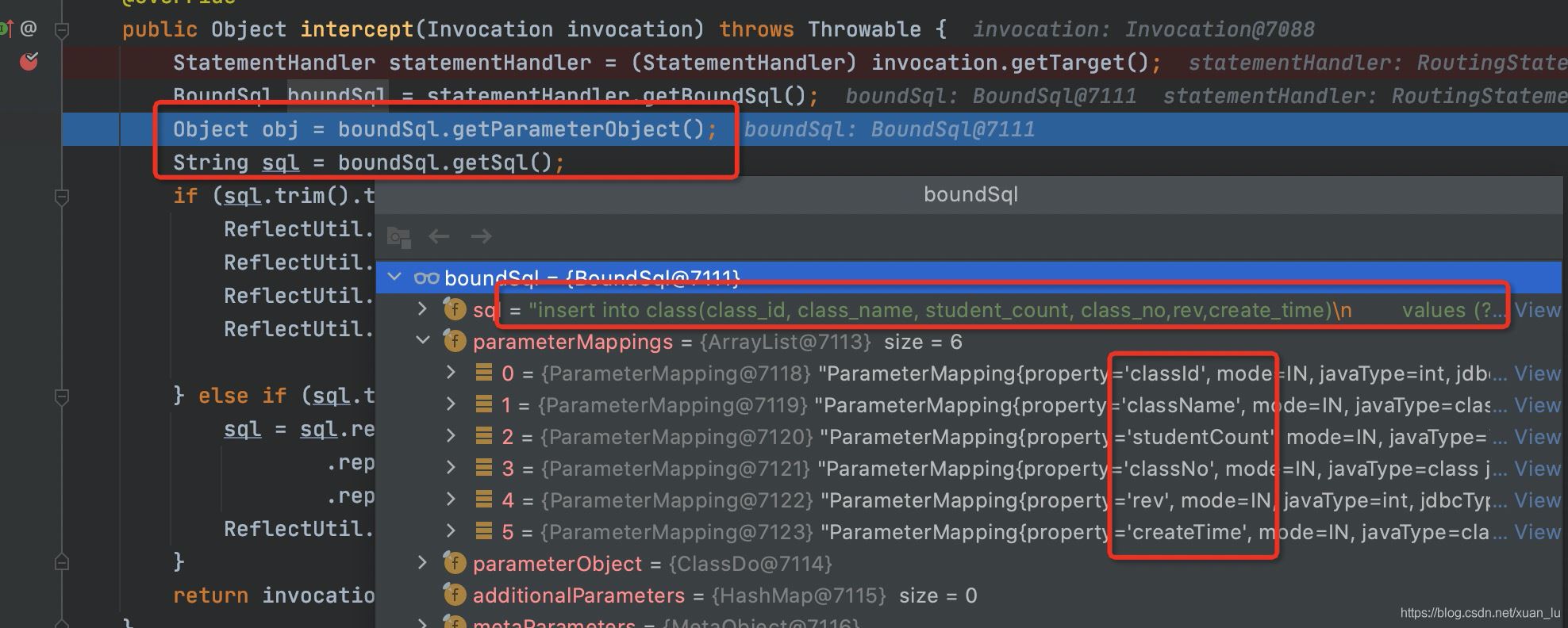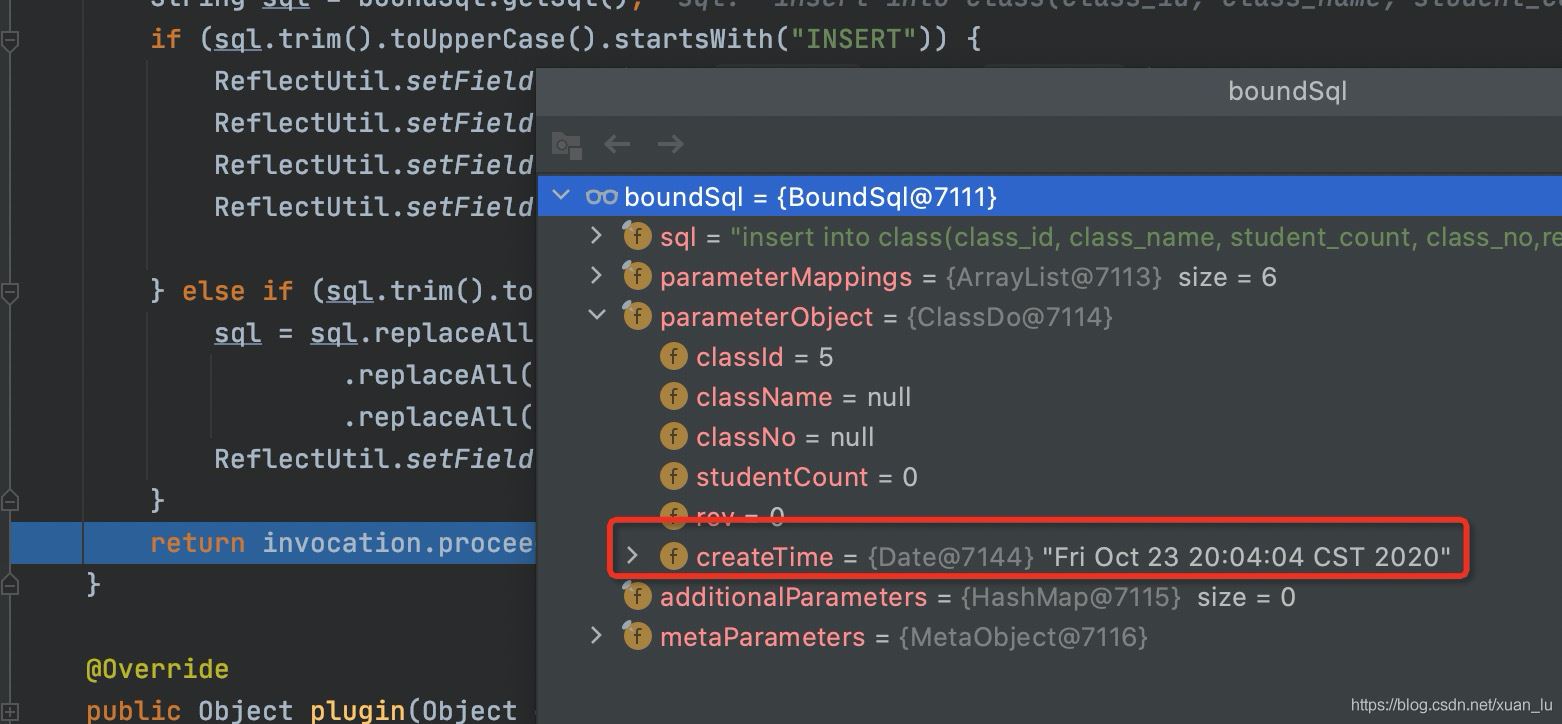您好,登錄后才能下訂單哦!
您好,登錄后才能下訂單哦!
這篇文章將為大家詳細講解有關使用mybatis 如何自定義實現攔截器插件Interceptor,文章內容質量較高,因此小編分享給大家做個參考,希望大家閱讀完這篇文章后對相關知識有一定的了解。
首先熟悉一下Mybatis的執行過程,如下圖:

類型
先說明Mybatis中可以被攔截的類型具體有以下四種:
1.Executor:攔截執行器的方法。
2.ParameterHandler:攔截參數的處理。
3.ResultHandler:攔截結果集的處理。
4.StatementHandler:攔截Sql語法構建的處理。
規則
Intercepts注解需要一個Signature(攔截點)參數數組。通過Signature來指定攔截哪個對象里面的哪個方法。@Intercepts注解定義如下:
@Documented
@Retention(RetentionPolicy.RUNTIME)
@Target(ElementType.TYPE)
public @interface Intercepts {
/**
* 定義攔截點
* 只有符合攔截點的條件才會進入到攔截器
*/
Signature[] value();
}Signature來指定咱們需要攔截那個類對象的哪個方法。定義如下:
@Documented
@Retention(RetentionPolicy.RUNTIME)
@Target({})
public @interface Signature {
/**
* 定義攔截的類 Executor、ParameterHandler、StatementHandler、ResultSetHandler當中的一個
*/
Class<?> type();
/**
* 在定義攔截類的基礎之上,在定義攔截的方法
*/
String method();
/**
* 在定義攔截方法的基礎之上在定義攔截的方法對應的參數,
* JAVA里面方法可能重載,故注意參數的類型和順序
*/
Class<?>[] args();
}標識攔截注解@Intercepts規則使用,簡單實例如下:
@Intercepts({//注意看這個大花括號,也就這說這里可以定義多個@Signature對多個地方攔截,都用這個攔截器
@Signature(
type = ResultSetHandler.class,
method = "handleResultSets",
args = {Statement.class}),
@Signature(type = Executor.class,
method = "query",
args = {MappedStatement.class, Object.class, RowBounds.class, ResultHandler.class})
})說明:
@Intercepts:標識該類是一個攔截器;
@Signature:指明自定義攔截器需要攔截哪一個類型,哪一個方法;
- type:上述四種類型中的一種;
- method:對應接口中的哪類方法(因為可能存在重載方法);
- args:對應哪一個方法的入參;
method中對應四種的類型的方法:
| 攔截類型 | 攔截方法 |
|---|---|
| Executor | update, query, flushStatements, commit, rollback,getTransaction, close, isClosed |
| ParameterHandler | getParameterObject, setParameters |
| StatementHandler | prepare, parameterize, batch, update, query |
| ResultSetHandler | handleResultSets, handleOutputParameters |
介紹
談到自定義攔截器實踐部分,主要按照以下三步:
實現org.apache.ibatis.plugin.Interceptor接口,重寫以下方法:
public interface Interceptor {
Object intercept(Invocation var1) throws Throwable;
Object plugin(Object var1);
void setProperties(Properties var1);
}添加攔截器注解@Intercepts{...}。具體值遵循上述規則設置。
配置文件中添加攔截器。
intercept(Invocation invocation)
從上面我們了解到interceptor能夠攔截的四種類型對象,此處入參invocation便是指攔截到的對象。
舉例說明:攔截**StatementHandler#query(Statement st,ResultHandler rh)**方法,那么Invocation就是該對象。
plugin(Object target)
這個方法的作用是就是讓mybatis判斷,是否要進行攔截,然后做出決定是否生成一個代理。
@Override
public Object plugin(Object target) {
//判斷是否攔截這個類型對象(根據@Intercepts注解決定),然后決定是返回一個代理對象還是返回原對象。
//故我們在實現plugin方法時,要判斷一下目標類型,如果是插件要攔截的對象時才執行Plugin.wrap方法,否則的話,直接返回目標本身。
if (target instanceof StatementHandler) {
return Plugin.wrap(target, this);
}
return target;
}注意:每經過一個攔截器對象都會調用插件的plugin方法,也就是說,該方法會調用4次。根據@Intercepts注解來決定是否進行攔截處理。
setProperties(Properties properties)
攔截器需要一些變量對象,而且這個對象是支持可配置的。
實戰
自定義攔截器
@Intercepts(value = {@Signature(type = StatementHandler.class, method = "prepare", args = {Connection.class, Integer.class})})
public class MyInterceptor implements Interceptor {
@Override
public Object intercept(Invocation invocation) throws Throwable {
StatementHandler statementHandler = (StatementHandler) invocation.getTarget();
BoundSql boundSql = statementHandler.getBoundSql();
Object obj = boundSql.getParameterObject();
String sql = boundSql.getSql();
if (sql.trim().toUpperCase().startsWith("INSERT")) {
ReflectUtil.setFieldValue(obj, "rev", 0);
ReflectUtil.setFieldValue(obj, "createTime", new Date());
ReflectUtil.setFieldValue(obj, "operateTime", new Date());
ReflectUtil.setFieldValue(boundSql,"parameterObject", obj);
} else if (sql.trim().toUpperCase().startsWith("UPDATE")) {
sql = sql.replaceAll(" set ", " SET ")
.replaceAll(" Set ", " SET ")
.replaceAll(" SET ", " SET rev = rev+1, operate_time = NOW(), ");
ReflectUtil.setFieldValue(boundSql,"sql", sql);
}
return invocation.proceed();
}
@Override
public Object plugin(Object o) {
return Plugin.wrap(o, this);
}
@Override
public void setProperties(Properties properties) {
}
}主要看下核心代碼方法intercept():
這段代碼主要目的:攔截insert和update語句,利用反射機制,設置insert語句的參數rev(版本號,利用樂觀鎖),第一次查詢,故創建時間和操作時間相同;update是將版本號+1,統一修改其操作時間。
mybatis-config
<?xml version="1.0" encoding="UTF-8" ?> <!DOCTYPE configuration PUBLIC "-//mybatis.org//DTD Config 3.0//EN" "http://mybatis.org/dtd/mybatis-3-config.dtd"> <configuration> <plugins> <plugin interceptor="com.qxy.mybatis.interceptor.MyInterceptor"/> </plugins> </configuration>
application.yml
特別重要的一點,一定將mybatis-config中的對象注入到Sprint容器中,否則不會生效。
...//省略其他配置 mybatis: config-location: classpath:/mybatis-config.xml
ReflectUtil
...//省略其他配置 mybatis: config-location: classpath:/mybatis-config.xml
debug

上圖中能夠看到BoundSql對象中主要存儲的屬性值,所以我們自定義攔截器時,主要針對BoundSql的屬性值進行修改。
程序代碼沒有走到我們反射機制設置值的位置,測試createTime=null;

返回之前,看下BoundSql對象的值,創建時間已被賦值。

關于使用mybatis 如何自定義實現攔截器插件Interceptor就分享到這里了,希望以上內容可以對大家有一定的幫助,可以學到更多知識。如果覺得文章不錯,可以把它分享出去讓更多的人看到。
免責聲明:本站發布的內容(圖片、視頻和文字)以原創、轉載和分享為主,文章觀點不代表本網站立場,如果涉及侵權請聯系站長郵箱:is@yisu.com進行舉報,并提供相關證據,一經查實,將立刻刪除涉嫌侵權內容。